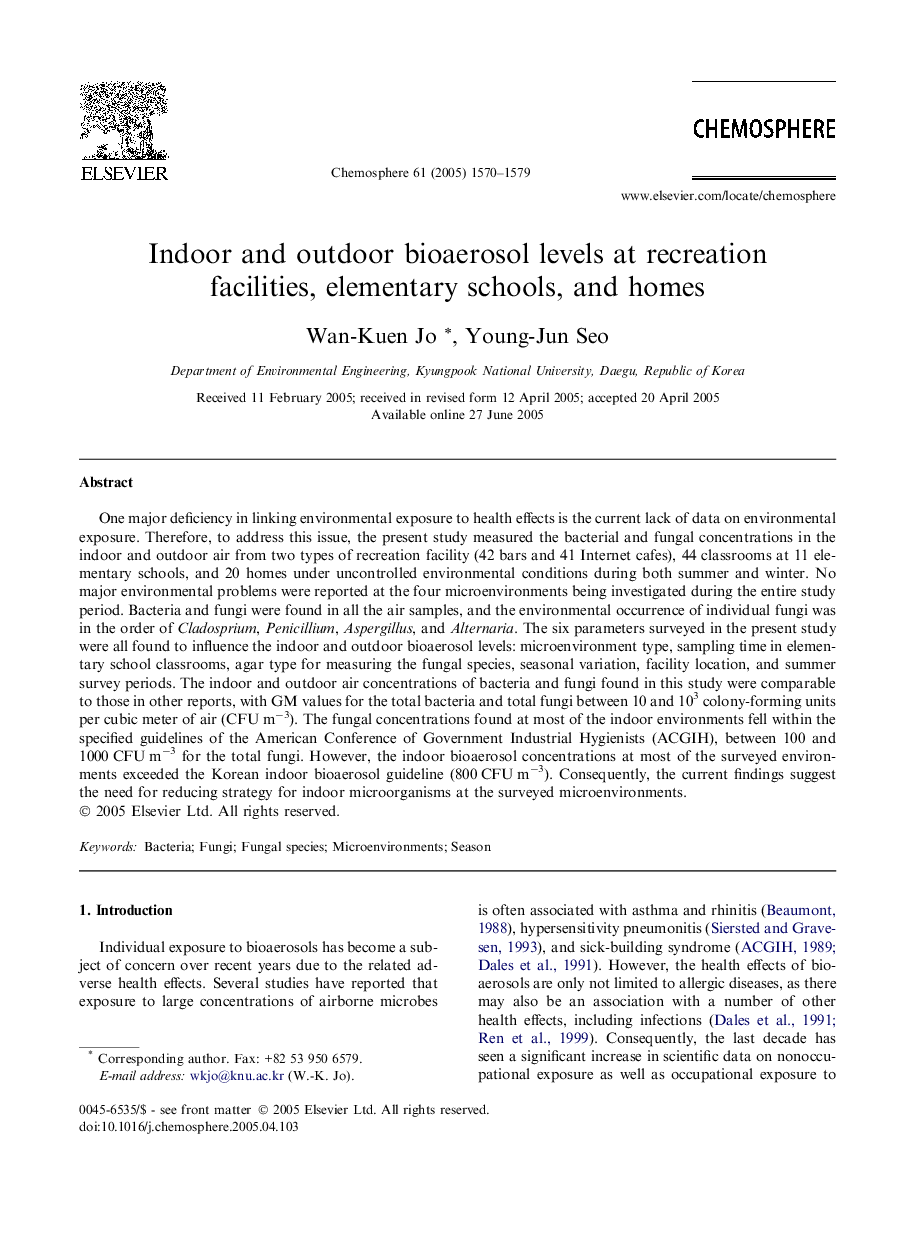| Article ID | Journal | Published Year | Pages | File Type |
|---|---|---|---|---|
| 9451499 | Chemosphere | 2005 | 10 Pages |
Abstract
One major deficiency in linking environmental exposure to health effects is the current lack of data on environmental exposure. Therefore, to address this issue, the present study measured the bacterial and fungal concentrations in the indoor and outdoor air from two types of recreation facility (42 bars and 41 Internet cafes), 44 classrooms at 11 elementary schools, and 20 homes under uncontrolled environmental conditions during both summer and winter. No major environmental problems were reported at the four microenvironments being investigated during the entire study period. Bacteria and fungi were found in all the air samples, and the environmental occurrence of individual fungi was in the order of Cladosprium, Penicillium, Aspergillus, and Alternaria. The six parameters surveyed in the present study were all found to influence the indoor and outdoor bioaerosol levels: microenvironment type, sampling time in elementary school classrooms, agar type for measuring the fungal species, seasonal variation, facility location, and summer survey periods. The indoor and outdoor air concentrations of bacteria and fungi found in this study were comparable to those in other reports, with GM values for the total bacteria and total fungi between 10 and 103 colony-forming units per cubic meter of air (CFUÂ mâ3). The fungal concentrations found at most of the indoor environments fell within the specified guidelines of the American Conference of Government Industrial Hygienists (ACGIH), between 100 and 1000Â CFUÂ mâ3 for the total fungi. However, the indoor bioaerosol concentrations at most of the surveyed environments exceeded the Korean indoor bioaerosol guideline (800Â CFUÂ mâ3). Consequently, the current findings suggest the need for reducing strategy for indoor microorganisms at the surveyed microenvironments.
Related Topics
Life Sciences
Environmental Science
Environmental Chemistry
Authors
Wan-Kuen Jo, Young-Jun Seo,
